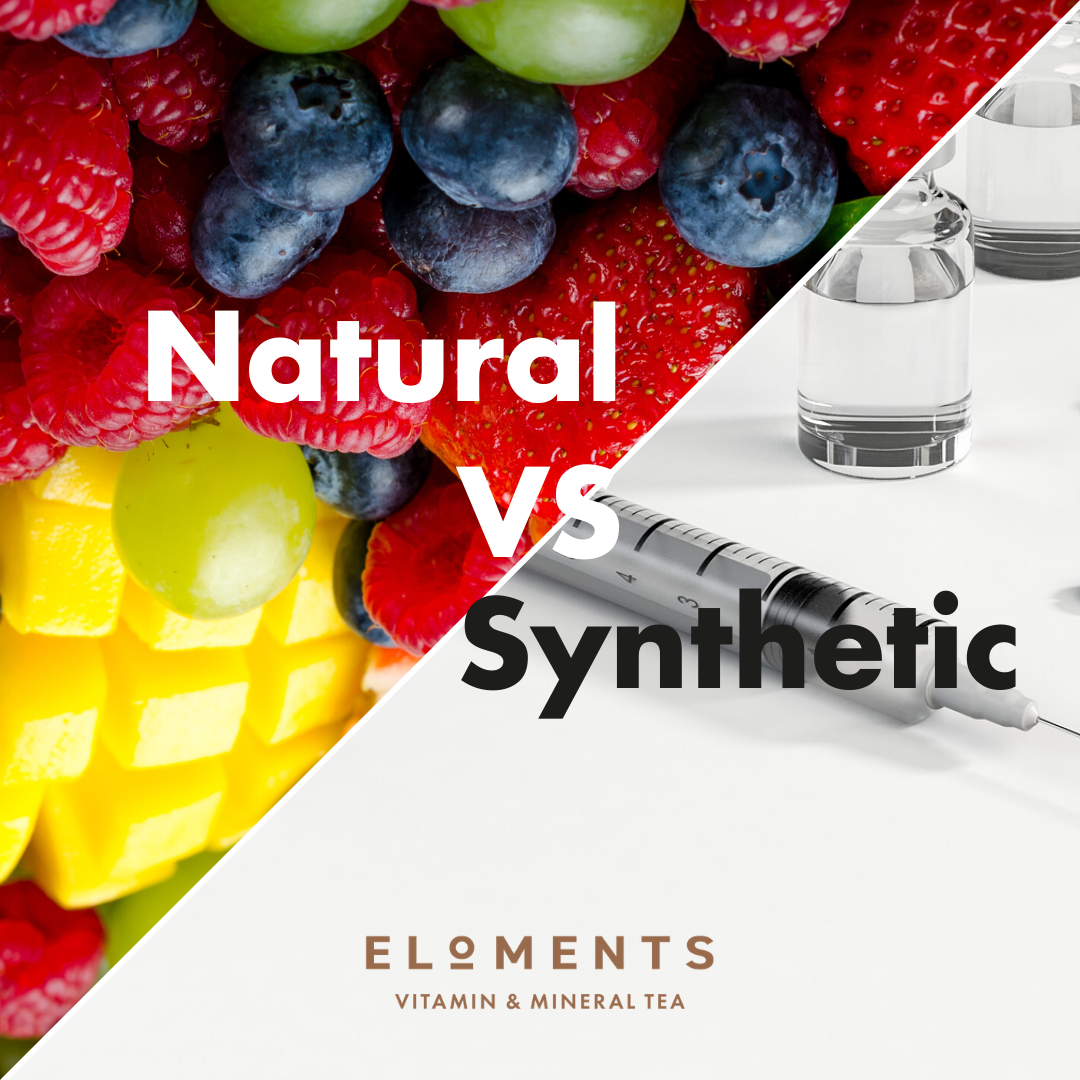
By Nutritionist and Dietician Ashleigh Feltham, Feed Your Future Dietetics
Did you know that the majority of the vitamins on supermarket shelves are synthetic?
If you enter any supermarket I can almost guarantee there will be a section, if not an aisle, dedicated to supplements.
Last year, after speaking with the founders at Eloments Organic Vitamin Tea about the plant-based nutrients they were using in their organic vitamin tea, I decided to check out what natural supplements were available at my local supermarket.
I went to three major supermarkets in Canberra, Australia. 100% of the multivitamin supplements on shelf that day contained synthetic vitamins and minerals. Not a single one was all natural.
Even more striking, after speaking with Australians about this finding, most of them didn’t know that their supplements were synthetic.
In this article I’ll take you through the difference between natural and synthetic vitamins, some of the research into the differences, and other things besides nutrients that may be in your vitamin tablets.
Synthetic Nutrients
Synthetic nutrients are often called ‘nature identical’ because they are made to replicate the chemical composition of naturally occurring nutrients. They’re created using an industrial process from synthetic materials, and are considered ‘isolated nutrients’ because they are made in isolation without the co-nutrients found in natural fruits and herbs.
At the moment, there is an increasing interest in moving back to natural products as some of the synthetic sources have failed to provide their desired therapeutic effect.
While natural sources of vitamins are being more understood by chemists looking to reproduce the effects in synthetic supplements, the exact replica still hasn’t been achieved and going back to nature over synthetic sources is the happiest place for your body.
Natural Nutrients
Natural, or wholefood supplements as they are sometimes called, are made from concentrated, dried whole foods or other plant materials.
I worked with the team at Eloments Organic Vitamin Tea to create a ‘clean label’ product, meaning there are no strange chemicals in the ingredients list. Interestingly, the ingredients list for Eloments doesn’t even contain vitamins. That’s because they’re not adding the synthetic forms of B1 B2 B3 etc that you would be used to seeing on pill bottles. Instead they’re blending nutrient-rich extracts that are standardised for their vitamin content.
The nutrients in Eloments Organic Vitamin Tea come from organic fruits, herbs and botanicals such as holy basil, guava, amla, and lemon. They’re extracted using a water extraction process, which also pulls the co-factors and co-nutrients from the plants.
The two women who founded Eloments were committed to making natural vitamins more available here in Australia, and I’m so proud that as of June, Eloments became one of the only 100% natural sources of organic certified vitamins on supermarket shelves. It’s now available in the tea aisle of most Woolworths stores nationwide.
What’s actually in that pill?
In my research into supplements, one of the most striking things I found wasn’t that most tablets on supermarket shelves had synthetic nutrients in them, it was all the other things that were being put into the pills.
For children’s vitamins, processed sugar is used to flavour the pills, but most kids already get too much sugar in their daily diets. And to get the vitamins to hold their cute shapes, manufacturers use binders, which are non-natural chemical additives.
In adult supplements, we can find things like food colouring, and many common supplements use polyethylene glycol, which are plasticizers in film coatings on the outside of pills.
Why are vitamins important?
Only around 5% of Australians are eating enough fruit and vegetables needed for their health.
This fact alone means most of the population could be at risk of vitamin or mineral deficiencies. A balanced diet is vital for general health and wellbeing, which is why it could be beneficial to drink Eloments tea in combination with including the recommended serves of all 5 food groups.
To see what a balanced diet looks like for your age, gender and life stage see the Australian Guide to Healthy Eating.


музыка слова
скачать музыку без
песнь песней онлайн
песня просто
музыка без регистрации